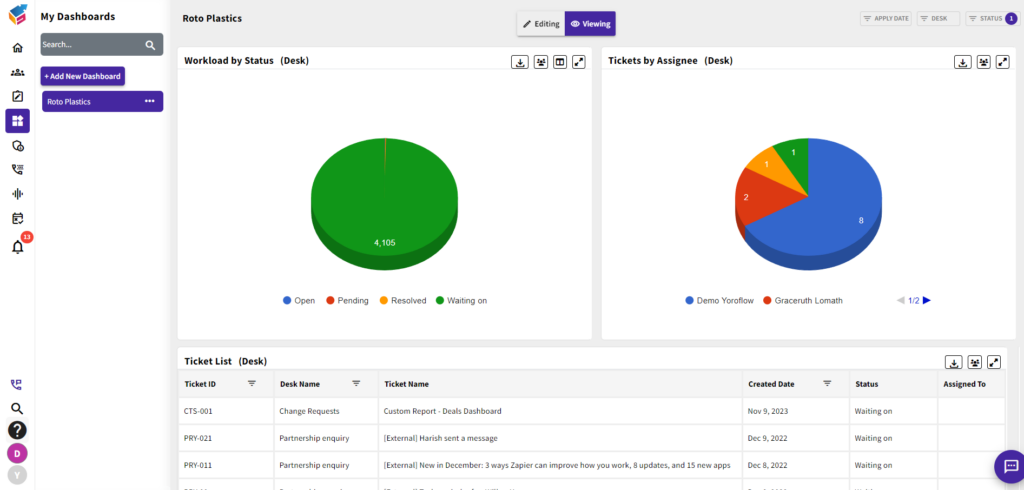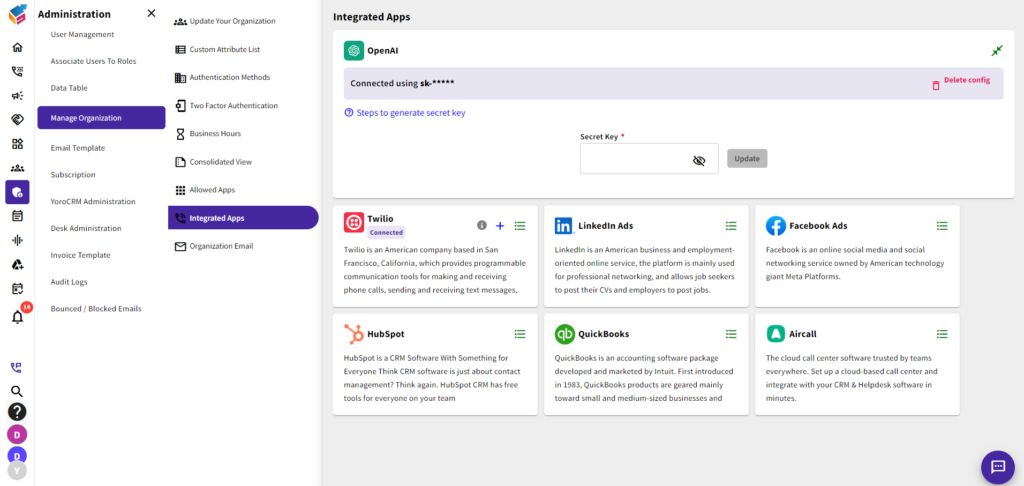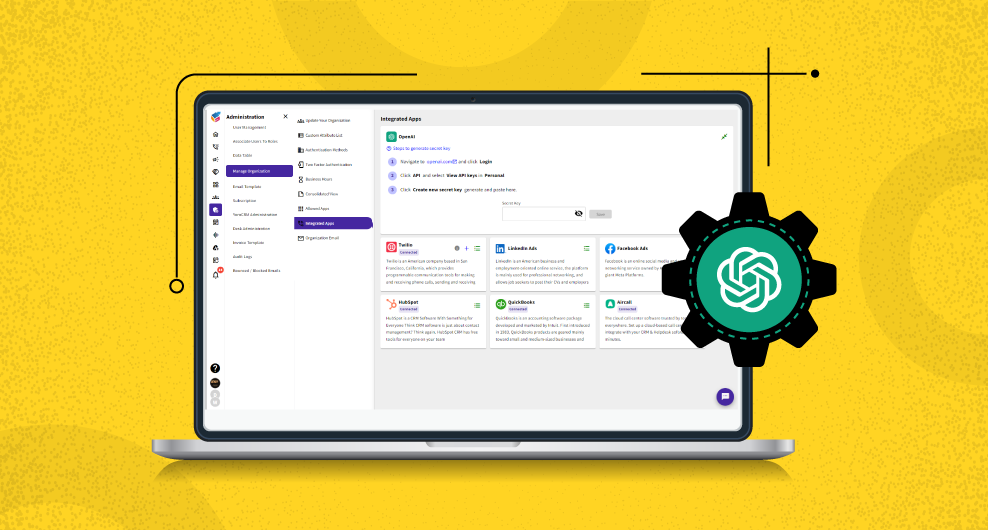Table of Contents
Just three years ago, the chatbot industry in India was already a thriving $3.1 billion market. However, with the emergence of the cutting-edge ChatGPT Artificial Intelligence (AI) technology, this market is now poised for even greater expansion. But what exactly is ChatGPT? It is an advanced natural language processing tool based on GPT-3, enabling users to engage in lifelike conversations with an AI-powered chatbot. Think of it as having your very own digital genie, always at the ready to help.
Are you intrigued?
Continue reading to delve deeper into this groundbreaking innovation within the AI domain. Explore the realms of customer feedback, AI customer service, customer care, and the pivotal role of customer service agents in shaping the future of ChatGPT technology.
What is ChatGPT?
ChatGPT is an advanced natural language processing tool that leverages the power of GPT-3 (Generative Pre-trained Transformer 3) technology. It allows users to engage in human-like conversations with an AI chatbot. Developed by OpenAI, ChatGPT is designed to understand and generate text-based responses based on the input it receives. It has been trained on a vast amount of data from the internet, enabling it to generate coherent and contextually relevant responses.
With ChatGPT, users can interact with the chatbot as if they were having a conversation with a real person. It can assist with a wide range of tasks, answer questions, provide information, and engage in engaging and dynamic dialogue. ChatGPT’s capabilities extend beyond simple keyword matching, as it can generate responses that demonstrate understanding of the context and intent behind user queries.
By harnessing the power of ChatGPT with customer support software or helpdesk software, businesses and organizations can enhance their customer service operations, provide personalized assistance, and streamline interactions with users.

However, it’s important to note that while ChatGPT offers remarkable capabilities, it also has certain limitations, such as occasional generation of incorrect or nonsensical responses and sensitivity to input phrasing. Ongoing research and improvements aim to address these limitations and enhance the overall performance and reliability of ChatGPT.
Capabilities of ChatGPT in Customer Service
ChatGPT offers several capabilities that make it valuable in customer service applications. Some of the key capabilities include:
- Natural Language Understanding: ChatGPT can comprehend and interpret natural language inputs from customers, allowing them to express their queries or concerns in a more conversational manner.
- Contextual Responses: ChatGPT generates responses that consider the context of the conversation, allowing for more coherent and relevant interactions with customers. It can maintain context over multiple turns, enabling a smooth and continuous conversation.
- Information Retrieval: ChatGPT can retrieve relevant information from its vast pre-trained knowledge base or external sources, providing accurate and up-to-date answers to customer inquiries.
- Personalization: ChatGPT can adapt its responses based on individual customer preferences or historical interactions, delivering a more personalized and tailored customer service experience.
- Scalability and Availability: ChatGPT can handle a large volume of customer interactions simultaneously, ensuring that customers receive prompt assistance and reducing waiting times.
- Multilingual Support: ChatGPT can communicate with customers in various languages, making it a versatile tool for global customer service operations.
- Versatility in Tasks: ChatGPT can assist customers with a wide range of tasks, such as answering frequently asked questions, providing product information, troubleshooting common issues, and guiding customers through processes or workflows.
- Training and Improvement: ChatGPT can be fine-tuned and trained on specific customer service datasets, allowing organizations to customize its responses and align it with their brand voice and guidelines.
While ChatGPT offers significant capabilities, it’s important to note that it may have limitations, such as occasional incorrect or nonsensical responses. Monitoring and human oversight are necessary to ensure the accuracy and quality of customer interactions. Continuous feedback and retraining can help improve ChatGPT’s performance and address specific customer service requirements.
Boundaries of ChatGPT in Customer Service
The application of ChatGPT in customer service comes with both boundaries and capabilities. Understanding these aspects is crucial for harnessing its potential effectively. Let’s explore the boundaries and capabilities of ChatGPT in customer service:
- Contextual Limitations: Although ChatGPT excels at maintaining context within a conversation, it may occasionally struggle to keep track of lengthy or complex discussions. It can sometimes provide responses that appear contextually relevant but lack accurate understanding.
- Sensitivity to Input Phrasing: ChatGPT is sensitive to the phrasing and wording of user inputs. A slight rephrase of a question or query might yield different responses, leading to inconsistencies in its performance.
- Overconfidence and Lack of Fact Verification: ChatGPT generates responses based on patterns and information from its training data, which may include inaccuracies or unverified content. It can sometimes produce confident-sounding responses that are factually incorrect or misleading.
- Inability to Handle Ambiguity: When faced with ambiguous queries or incomplete information, ChatGPT may struggle to provide accurate responses. It tends to guess or make assumptions rather than seeking clarification.
It’s important to note that while ChatGPT possesses impressive capabilities, human oversight and monitoring are essential to ensure accuracy, mitigate biases, and maintain the quality of customer service interactions. Continuous improvement efforts, user feedback, and training iterations can further enhance ChatGPT’s performance in customer service applications.
What is the Future Scope of Artificial Intelligence?
The future scope of artificial intelligence (AI) is vast and holds tremendous potential across various domains. Here are some key areas where AI is expected to have a significant impact:
- Automation and Robotics: AI-powered automation is likely to revolutionize industries by streamlining processes, improving efficiency, and reducing human labor. Robotics will advance further, enabling the development of intelligent machines capable of performing complex tasks.
- Healthcare: AI has the potential to transform healthcare by enhancing diagnostics, drug discovery, personalized medicine, and patient care. It can analyze vast amounts of medical data, provide early disease detection, and support doctors in decision-making.
- Autonomous Vehicles: The future of transportation lies in self-driving cars and autonomous vehicles. AI algorithms will play a crucial role in enabling these vehicles to navigate safely, make decisions, and optimize transportation systems.
- Natural Language Processing: AI advancements in natural language processing (NLP) will continue to improve language understanding, speech recognition, and language generation. This will lead to more sophisticated virtual assistants, language translation, and improved human-computer interactions.
- Smart Cities: AI-powered technologies will contribute to the development of smart cities. From intelligent traffic management and energy optimization to urban planning and resource allocation, AI will help create sustainable and efficient urban environments.
- Internet of Things (IoT): AI combined with IoT will result in smart and connected systems. AI algorithms will process data from interconnected devices, enabling better automation, predictive maintenance, and optimization of IoT networks.
- Cybersecurity: AI will be crucial in combating evolving cyber threats. It can analyze patterns, detect anomalies, and strengthen security measures to protect against cyberattacks.
- Ethical AI and Governance: As AI becomes more prominent, the focus on ethical AI development and governance will grow. There will be a need for regulations, policies, and frameworks to ensure responsible AI use, data privacy, and transparency.
It’s important to note that the future scope of AI is constantly evolving, and new applications and advancements may emerge beyond what is currently envisioned. Continued research, innovation, and responsible implementation will shape the future of AI, offering immense possibilities for societal transformation.
How Can You Get Started with ChatGPT with CRM?

To get started with ChatGPT using CRM, follow these steps:
- Sign up for CRM: Visit the CRM website and sign up for an account. Provide the required information and complete the registration process.
- Access ChatGPT Integration: Once you have a CRM account, navigate to the integration settings or marketplace within the platform. Look for the ChatGPT integration and select it to initiate the setup process.
- API Key Generation: To connect CRM with ChatGPT, you’ll need an API key. Generate an API key specific to ChatGPT by following the instructions provided within the CRM integration settings. This key will allow CRM to communicate with the ChatGPT API.
- Configure Integration Settings: Enter the generated ChatGPT API key in the appropriate field within the CRM integration settings. This step establishes the connection between the two platforms.
- Customize ChatGPT for Your Use Case: CRM may provide options to customize and fine-tune the ChatGPT integration based on your specific requirements. This customization can include setting default responses, defining conversation flows, and integrating with your existing CRM processes.
- Test and Train ChatGPT: Once the integration is set up, test ChatGPT within the CRM environment. Engage in conversations with the chatbot to ensure it performs as expected. Provide feedback to improve the accuracy and quality of responses.
- Deploy ChatGPT in Customer Service: After testing and refining, deploy ChatGPT within your customer service channels. This can include integrating it into your website, mobile app, or other communication channels where customers interact with your business.
- Monitor Performance and Optimize: Continuously monitor the performance of ChatGPT in customer service interactions. Collect user feedback and analyze metrics to identify areas for improvement. Fine-tune the system, adjust conversation flows, and refine responses to optimize the customer experience.
Remember to familiarize yourself with the specific features and functionalities offered by CRM for integrating ChatGPT. Their documentation, support resources, or customer success team can provide detailed guidance on how to leverage ChatGPT effectively within their platform.




